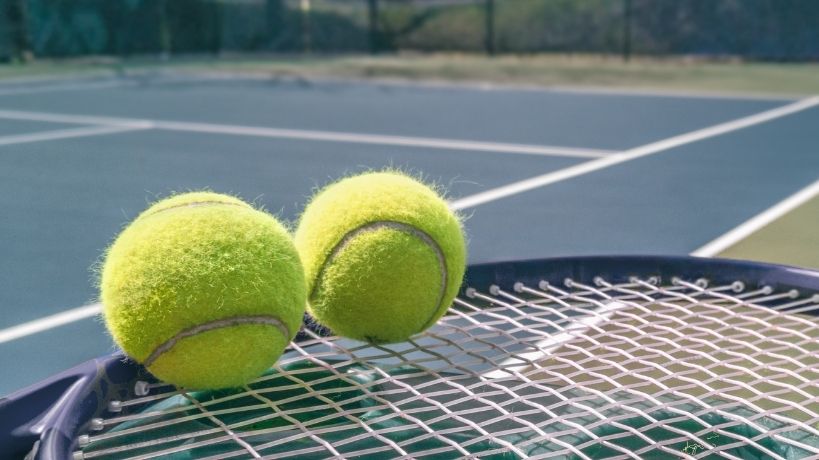
Various types of tennis court surfaces are available, and each one has different influences on game play. Therefore, it’s helpful to know the different characteristics of each surface type to decide which one may suit you best. Here’s a brief breakdown of each type to help you determine which tennis court surface is best for you.
Grass
Grass is the original surface that the first tennis players ever played on. Because it’s slippery, this type of surface is the fastest to play on, as it allows the ball to pick up more speed. Grass is also the softest surface to play tennis on, making for a lower ball bounce.
Although grass courts aren’t as common today as they used to be, one of the most prestigious tennis championships, Wimbledon, is held on a grass court. Overall, this type of surface is best for fast, powerful players who have big serves and who play close to the net. However, the major downfall of grass courts is that they’re very high maintenance, having to be watered and mowed regularly.
Clay
Traditional red clay is a mixture of crushed brick, while green or gray clay courts are made of crushed metabasalt. This type of surface is the slowest to play on due to its texture. Ball speed is slowest on this surface, and clay produces a higher ball bounce than grass. As a result, clay courts favor baseline players who put a lot of spin on the ball, yet they’re more difficult for players with big serves who like to volley.
The French Open is the only Grand Slam to utilize a clay court surface. Clay courts require grooming after play, as well as regular line maintenance, but thankfully hydrocourt clay courts do not need to be manually watered, keeping maintenance time and cost relatively low. While clay courts do require more regular maintenance than hard courts, such repairs are often easier and more affordable than resurfacing a concrete court.
Clay courts tend to favor technical players who play back near the baseline. Clay courts are also the best for older players and players with joint problems, as the clay surface is much more forgiving than a hard court.
Hard
Hard courts typically have an asphalt or concrete base with or without an acrylic coating. This type of tennis court falls somewhere in between grass courts and clay courts when it comes to speed and ball bounce. The ball travels slower on this surface than on a grass court but faster than on a clay court. In addition, because hard courts are so uniform, the ball bounce is high and predictable, making for longer rallies.
This type of surface is the most common one you’ll find on the professional circuit. It’s what players use at the Australian Open and the US Open Grand Slams. Hard courts also require very little maintenance, only needing to be resurfaced when the top layer begins to degrade.
Hard courts are what most people think of when they think of tennis, and it is the most likely surface available near you. Hard courts offer a nice balance of play between grass and clay courts that favors neither physically gifted nor technical players.
So which tennis court surface is best for play? At the end of the day, you can play a great game of tennis on any one of these surfaces. It really comes down to the personal preference and individual strengths of a player. Speed and ball bounce will vary with each type of surface, so trying out each surface to determine what suits you and your strengths is best. Make sure to check out All Star Tennis Supply for all of your tennis court equipment.

